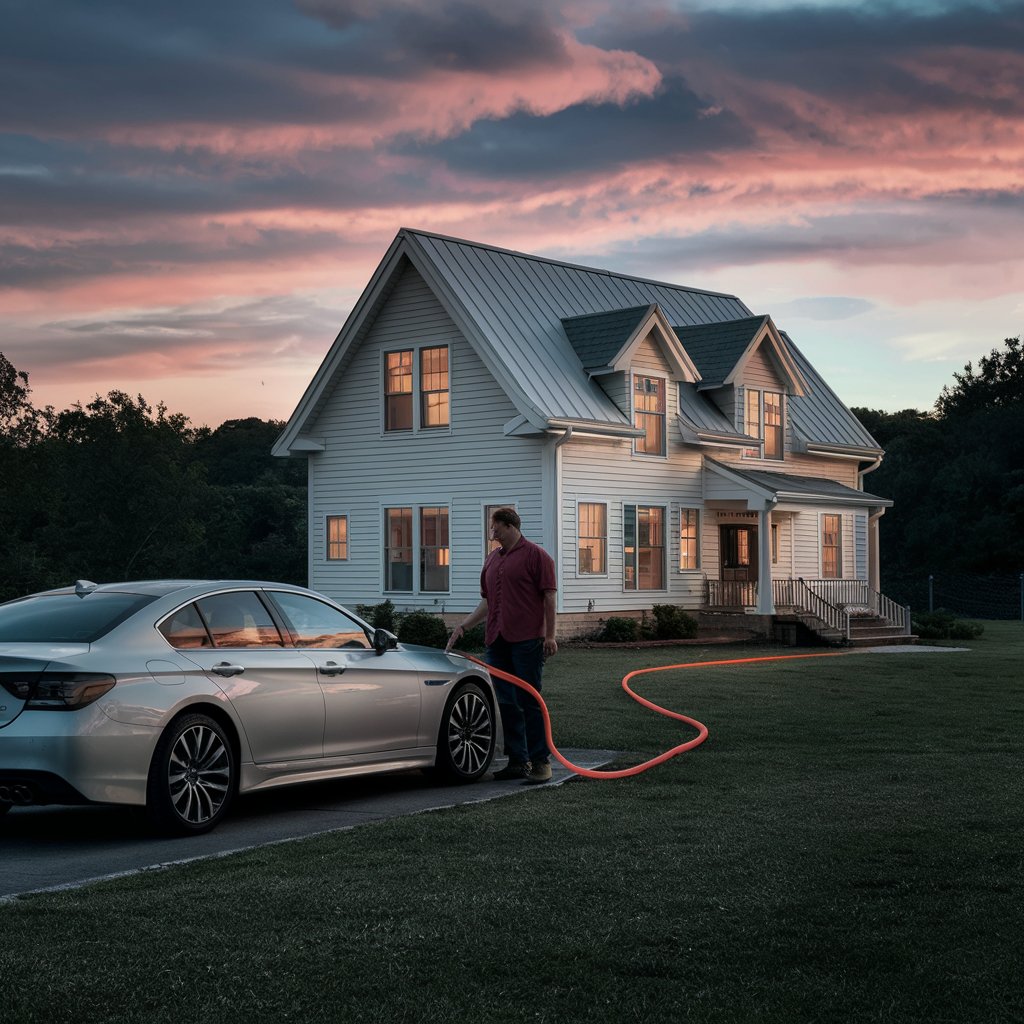As the world moves towards renewable energy and sustainable living, electric vehicles (EVs) are emerging as more than just a green mode of transportation. With advancements in vehicle-to-grid (V2G) technology, some EVs can now be used as home battery backups, providing a reliable source of power during outages or even sustaining a home off-grid. This article explores how EVs can serve as home battery backups, the benefits of this technology, and the EV models that support it.
How EVs Can Serve as Home Battery Backups
- Vehicle-to-Grid (V2G) Technology
- Overview: V2G technology enables the bi-directional flow of electricity between an electric vehicle and the power grid. This means that the energy stored in an EV’s battery can be fed back into the home or grid when needed.
- Implementation: V2G requires a compatible EV, a bidirectional charger, and a smart grid connection to manage energy flow effectively.
- Vehicle-to-Home (V2H) Capability
- Overview: V2H is a subset of V2G that focuses on supplying power directly to a home rather than the broader grid. It allows homeowners to use their EVs as backup power sources during outages or to support off-grid living.
- Setup: This typically involves a home energy management system (HEMS) that integrates with the EV and manages energy distribution within the home.
Benefits of Using EVs as Home Battery Backups
- Enhanced Energy Security
- Power Outage Solution: During power outages, an EV can supply electricity to essential appliances and devices, ensuring that critical functions like refrigeration, lighting, and communication remain operational.
- Off-Grid Living: For those living in remote areas or aiming for a more sustainable lifestyle, an EV can provide a reliable energy source independent of the traditional power grid.
- Cost Savings
- Peak Shaving: By using stored energy from an EV during peak demand times, homeowners can reduce their reliance on grid electricity, potentially lowering energy bills.
- Renewable Integration: EVs can store excess energy generated from renewable sources like solar panels, which can then be used when production is low or demand is high.
- Environmental Impact
- Reduced Carbon Footprint: Utilizing an EV as a home battery backup promotes the use of clean energy and reduces reliance on fossil fuels.
- Energy Efficiency: Efficient energy management systems can optimize the use of stored energy, minimizing waste and maximizing sustainability.
EV Models with Home Battery Backup Capability
- Nissan Leaf
- V2G and V2H Enabled: The Nissan Leaf is one of the pioneers in V2G technology, with several models supporting bi-directional charging.
- Battery Capacity: With a battery capacity ranging from 40 kWh to 62 kWh, the Leaf can provide substantial backup power.
- Tesla Model S/3/X/Y
- Powerwall Integration: While Tesla vehicles do not currently support V2G directly, they can be paired with the Tesla Powerwall, a home battery system that offers similar benefits.
- Advanced Features: Tesla’s extensive range and advanced battery technology make their vehicles suitable for home energy backup in conjunction with the Powerwall.
- Mitsubishi Outlander PHEV
- V2H Capability: The Mitsubishi Outlander PHEV supports vehicle-to-home technology, allowing it to power home appliances during outages.
- Plug-in Hybrid Advantage: As a plug-in hybrid, it offers the flexibility of both electric and gasoline power.
- Ford F-150 Lightning
- Pro Power Onboard: The all-electric Ford F-150 Lightning features Pro Power Onboard, which allows the truck to serve as a mobile power source with up to 9.6 kW of exportable power.
- Emergency Power: This feature can power a home during outages, providing a robust backup solution.
Setting Up an EV Home Battery Backup System
- Assessing Energy Needs
- Determine Requirements: Identify the essential appliances and devices that need to be powered during an outage and calculate their total energy consumption.
- Battery Capacity: Ensure that the EV’s battery capacity meets or exceeds the calculated energy requirements.
- Installing a Bidirectional Charger
- Professional Installation: Hire a certified electrician to install a bidirectional charger compatible with your EV.
- Safety and Compliance: Ensure the installation meets all safety standards and local regulations.
- Integrating with a Home Energy Management System (HEMS)
- Smart Management: A HEMS can optimize energy usage, ensuring efficient distribution of power from the EV to the home.
- Monitoring and Control: Use smart apps and interfaces to monitor energy flow and control power usage in real-time.
Conclusion
Electric vehicles are transforming from mere transportation tools into versatile energy assets. By leveraging V2G and V2H technologies, EVs can provide reliable backup power during outages and support off-grid living, enhancing energy security and promoting sustainability. With advancements in technology and growing support from automakers, the integration of EVs as home battery backups is set to become an integral part of the future energy landscape. Whether you’re preparing for emergencies or aiming for a greener lifestyle, using your EV as a home battery backup offers a smart and sustainable solution.
